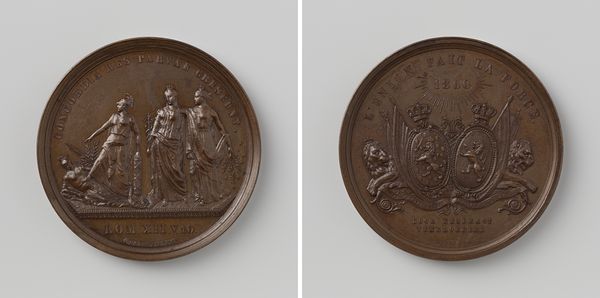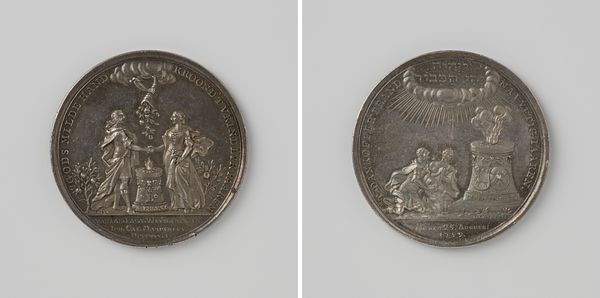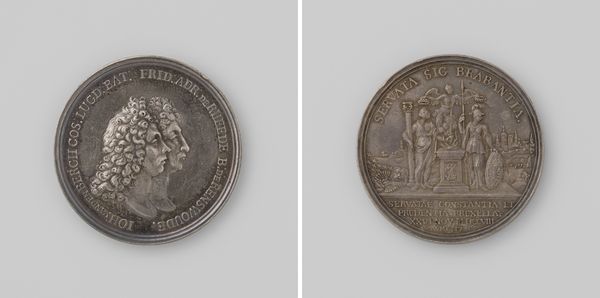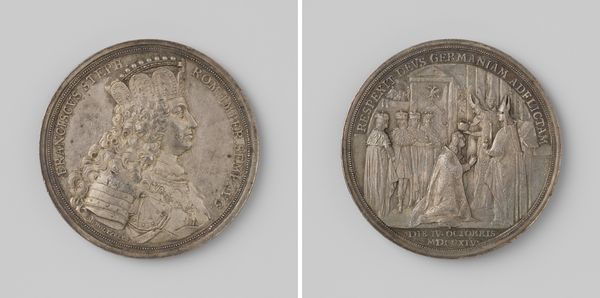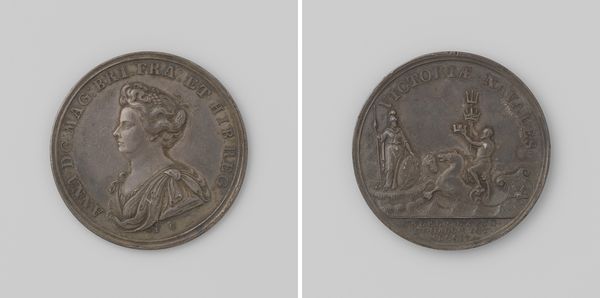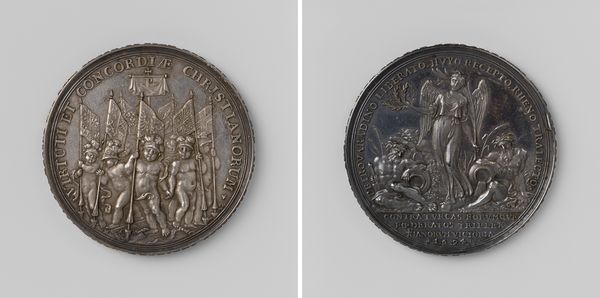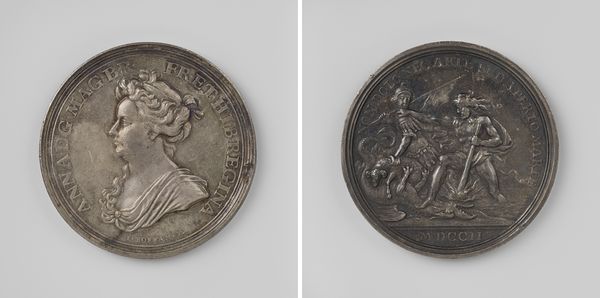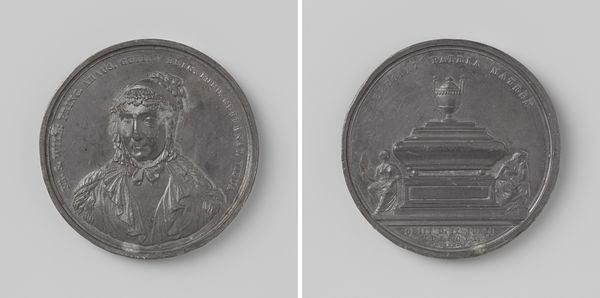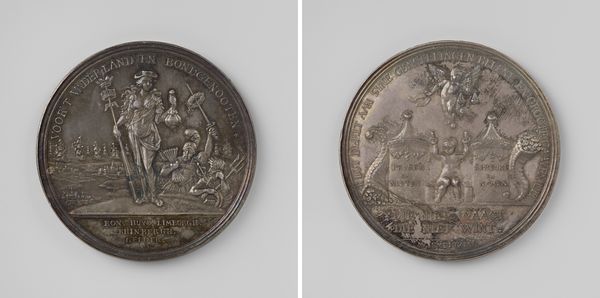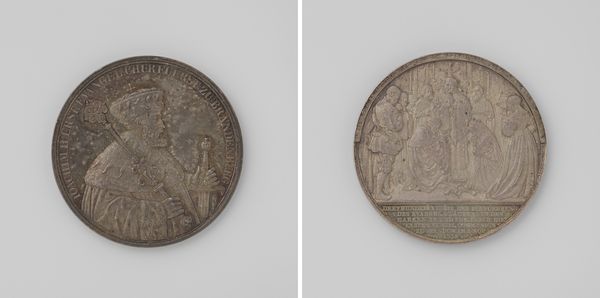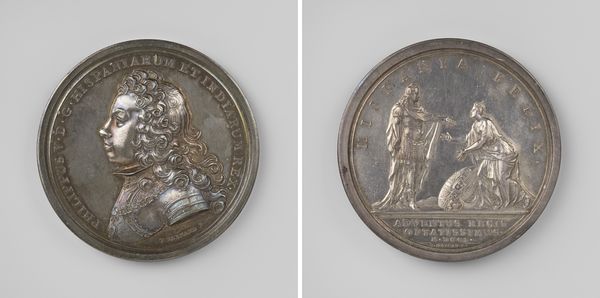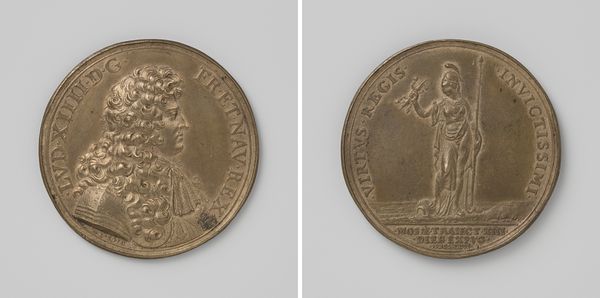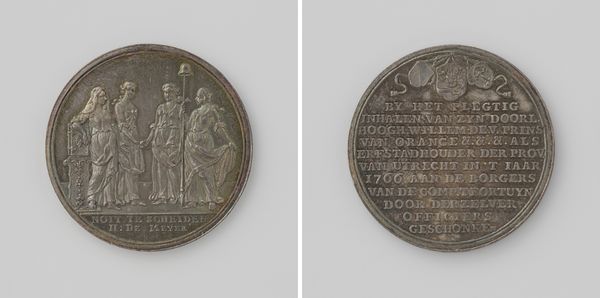
Dimensions: diameter 6.4 cm, weight 92.26 gr
Copyright: Rijks Museum: Open Domain
Editor: Here we have Moses de Vries’s “Ontwerp van wet aangenomen tot de aanleg van het Noordzeekanaal,” dating back to 1862. It's a striking metal relief. The imagery feels very classical, almost staged. What can you tell us about this work? Curator: This medal offers a fascinating window into 19th-century Dutch aspirations and how they were visualized through art. Notice how it adopts a Neoclassical style, evoking the grandeur of ancient Greece and Rome. This wasn’t just about aesthetics. Editor: It's interesting that you mention it being more than just aesthetics... Curator: Absolutely. The decision to use Neoclassicism spoke directly to the political and social climate. The Netherlands, like many European nations at the time, was undergoing rapid modernization, including major public work such as canal construction, so choosing that aesthetic reinforced the idea of progress and civic virtue, didn't it? Do you notice anything particular about how the figures are presented? Editor: They're idealized. The woman offering the laurel looks very regal. And on the other side, the figures emerging from what I'm assuming is the sea look incredibly strong and capable. It definitely gives off a powerful, aspirational feeling. Curator: Precisely. By portraying the project, in such grand terms the artist and those who commissioned this medal helped position it within a larger narrative of national pride and global competitiveness. Editor: That’s a really insightful point. I never would have considered how much the artistic style reinforces the socio-political messaging of the piece. Curator: It highlights how art in the public sphere is so often about conveying and legitimizing power. Editor: Well, that is something I’ll certainly think about when I look at similar historical works from now on! Curator: I'm glad this deepened your insights!
Comments
No comments
Be the first to comment and join the conversation on the ultimate creative platform.
